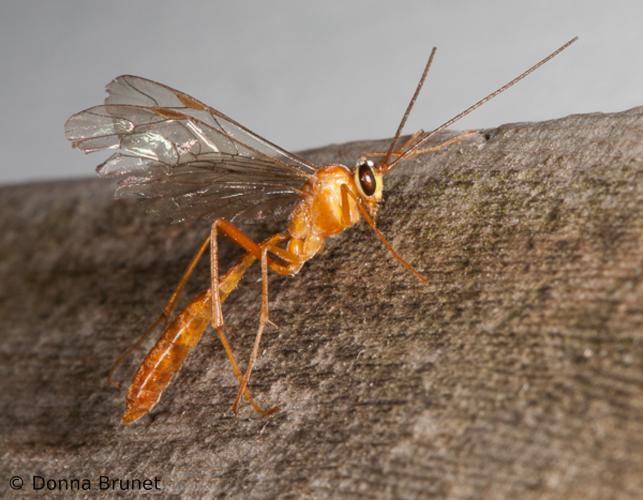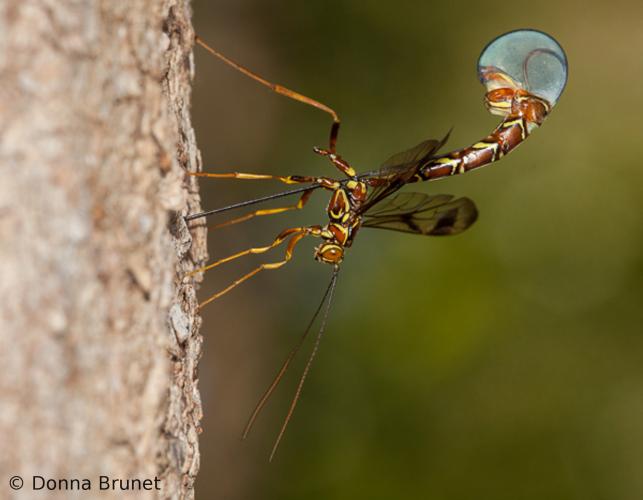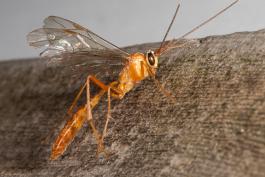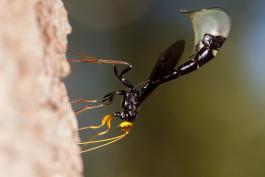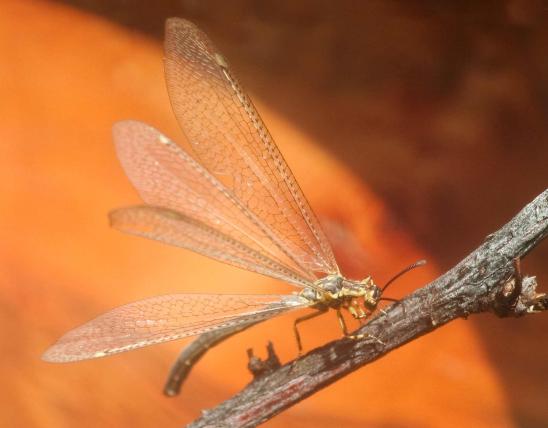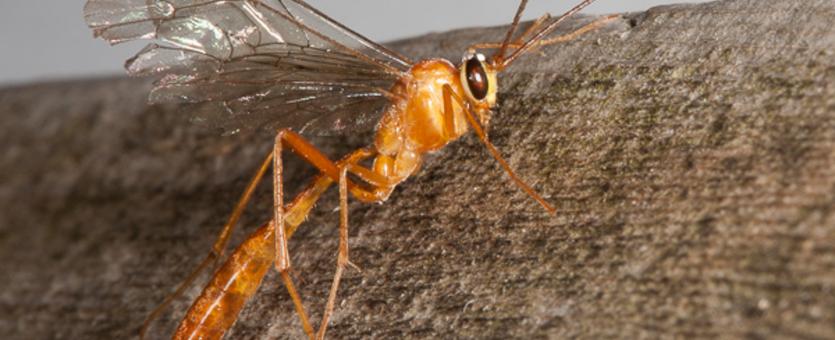
Ichneumons are much like their cousins, the stinging wasps, only slenderer and with longer antennae (usually at least half the length of the body, with 16 or more segments). The females usually have dramatically long ovipositors (a needlelike or filament-like appendage at the tip of the abdomen used for laying eggs) — it’s often longer than the entire body.
There are thousands of species of ichneumons in North America, and many are hard to tell apart. Colors vary, with some being drab and others brightly colored or patterned. Some have black and yellow bands like stinging wasps.
Length: to about 1½ inch (not including appendages; varies with species; many are much smaller).
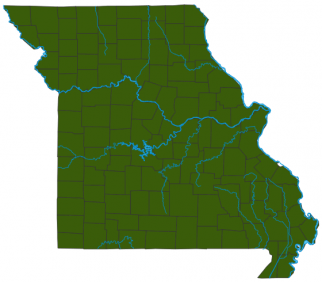
Statewide.
Habitat and Conservation
Ichneumons are the largest family of any of the animals, with some 60,000 to 100,000 species worldwide. They are common and can be found in nearly all habitats. The name “ichneumon” comes from Greek words meaning “tracker” and “footprint,” and the females of these parasitic wasps certainly do hunt for, and track down, their various host species.
Food
The young of ichneumons are mostly internal parasitoids of insect larvae in families including the beetles; the butterflies and moths; and the ants, bees, and wasps; plus flies and spiders. The mother ichneumon typically inserts her eggs into the body of the host — usually a grub or caterpillar — and the hungry larval ichneumons, devouring their hosts from the inside, usually end up killing their hosts by the time they are ready to pupate and become adult ichneumons. The fact that they usually end up killing their hosts explains why they are called parasitoids as opposed to parasites.
Status
Common.
Life Cycle
The mother ichneumon uses her ovipositor to inject eggs into a host’s body — usually a grub, caterpillar, or pupa. Many ichneumons need a certain species, genus, or family of insect as a host. Female ichneumons can be seen wandering over tree trunks, using their antennae to seek the larvae of wood-boring insects below the bark; detecting one, the female inserts her long ovipositor through the wood and lays eggs in the larva. Her young hatch and devour their host; then they pupate and emerge later to begin the cycle again.
Human Connections
Most people consider ichneumons beneficial, as they play a huge role in controlling insects, including many considered pests or injurious (such as tomato hornworms, boll weevils, and wood borers).
Ichneumon and other parasitoid life cycles have provided inspiration for science fiction writers, who imagine space monsters that similarly lay eggs on or in their prey (usually human crewmembers of a spaceship), and their offspring mature and chew their way out of their unfortunate hosts in spectacular and gory fashion. If you pay close attention to the life cycles of real-life parasitoids, most of them have a very limited set of host species that will "work." In real life, parasitoids generally have coevolved with their hosts, so that their feeding doesn't kill the host outright, and so their host's immune system isn't immediately triggered by their presence and respond to them as an infection.
Ecosystem Connections
Ichneumons help control insect numbers by eliminating many insects before they reach an adult, reproductive stage. In many cases, the insects they control are ones that are injurious to trees, so the ichneumons help trees stay healthy.
Despite the wasplike patterns of some, ichneumons themselves are eaten by other predators. Many young ichneumons are no doubt eaten when their hosts are snatched by other predators.
